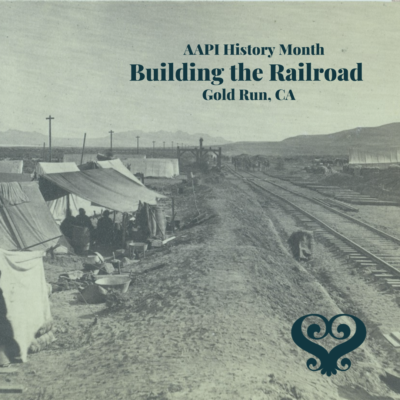Along Interstate 80 in Gold Run, California, there is a rest stop. Travelers walk around to stretch their legs and maybe they grab a pick-me-up from one of the various vending machines located by the wall. Trees and picnic tables surround folks at this rest stop, close to Lake Tahoe. On the left, there is a rock with a plaque embedded with brass lettering. In the distance, the unmistakable sound of a passing train.
Over 150 years ago in Gold Run, there would have been a crew of about 30 men wearing straw hats, clothes covered in dust and dirt, lowering giant steel train tracks off a cliff and drilling holes into granite rock. The men are building a railroad that will transform the country. The work is brutal and back breaking. For example, planting explosives to clear land took skill and precision, often leading to injury and death.
In 1862 the Pacific Railroad Act chartered the Central Pacific and Union Pacific Railroad Companies to build a transcontinental railroad connecting the U.S. from east to west. Chinese workers began work on the railroad in 1864 and would routinely experience unequal treatment while working on the railroad, earning at least 30-50% less pay than their white counterparts.
Few first hand accounts exist from Chinese railroad workers. Wong Hau-hon, who arrived from Guangdong province on a ship with 90 fellow Chinese immigrants, wrote these words: “Dynamite was used to blast a rock cave. Twenty charges were placed and ignited, but only eighteen blasts went off. However, the white foreman…ordered the Chinese workers to enter the cave to resume work. Just at that moment the remaining two charges suddenly exploded. Chinese bodies flew from the cave as if shot from a cannon.
Leland Stanford, one of the Big Four Central Pacific Railroad tycoons, who once referred to Chinese people as “racially inferior,” became one of the richest men in the world by using Chinese labor. He went on to found California’s Stanford University. In 2012, Stanford’s Chinese Railroad Workers in North America Project began the herculean task of recovering hidden history. The project was successful, leading to vital research and the memorial at the Gold Run rest stop.

